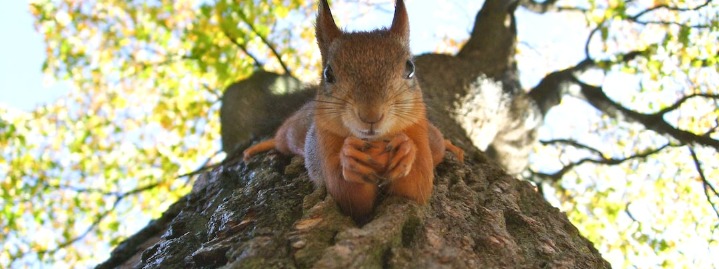Squirrels in Texas
Contents
Squirrels are all over the state of Texas. However, their primary residence is in the eastern part of the state. Texas hosts four main types of squirrels: Fox Squirrels, Gray Squirrels, Flying Squirrels, and Rock Squirrels.
Rock Squirrels in Texas
Rock squirrels are ground-dwellers, unlike other squirrels, who prefer high-rise tree tops. Rock squirrels are found more in the Hill Country and Western side of Texas. The rock squirrel is predominantly a herbivore, eating mostly leaves, stems, and seeds. They also eat acorns, pine nuts, and fruits of native plants, including cacti.
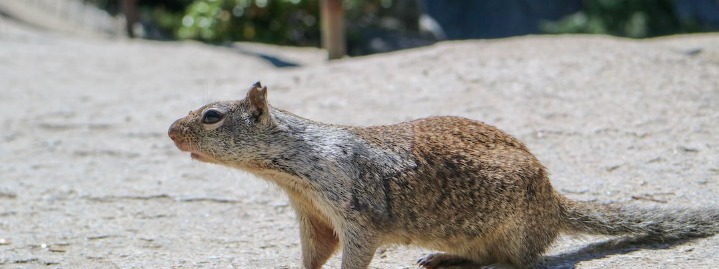
The rock squirrel forages for its food daily by climbing trees and bushes and finding it on the ground. They are black toward the head and salt-and-pepper toward the hind, approximately 1-3 lbs, the largest species measuring up to 21 inches long, and long bushy tails with white edges.
Habitat
This breed is almost always found in rocky areas, such as cliffs, canyon walls, boulder piles, highway fills, and rocky terrain. Rock squirrels dig burrows with their sharp claws and strong legs. The burrows provide shelter, safety, living space, and food storage. Occasionally a rock squirrel will make its den in a tree hollow, but most of the time, it lives in an underground burrow. The entrance is usually located under a rock or in a crevice to conceal it from predators. Hence, the species name Rock squirrel.
Fox Squirrels in Texas
Fox squirrels are the most common tree squirrels found in the state. They are primarily found in east and central Texas. Fox squirrels are brownish-gray with an orange underside, 7-14″ bushy tail, 18-27″ long, and approximately 1-3 lbs.
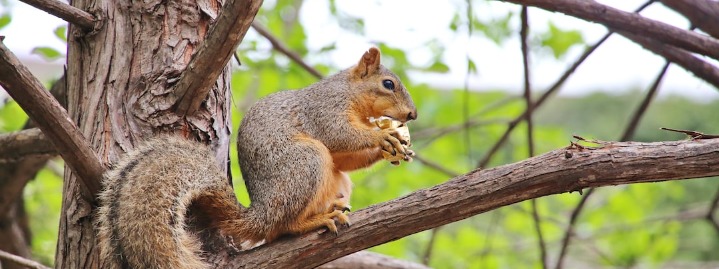
Habitat
Fox squirrels prefer an open, park-like residence to roam and call home. They enjoy large mature trees that provide shade. Fox squirrels are often seen in tree tops. These squirrels can adapt to various forest habitats, making them a leading species in eastern Texas and causing their territories with other squirrels to overlap.
Gray Squirrels in East Texas
About 90 percent of the squirrels in East Texas are another species, Gray squirrels. Gray squirrels are also known as ‘cat’ squirrels. This breed is generally found in the eastern region of Texas. Gray squirrels are: grayish, 1-2 lbs, 16-20 inches long, and have a 7-10″ tail that is bushy. They are similar to the fox squirrel in many ways, but in other ways, they are rather different. The gray squirrel is more sociable than the fox squirrel and is more likely to be found in groups.
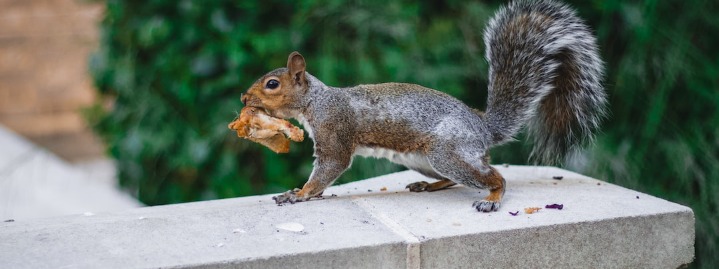
Habitat
This breed is almost always found in rocky areas, such as cliffs, canyon walls, boulder piles, highway fills, and other rocky terrains. Rock squirrels dig burrows with their sharp claws and strong legs. The burrows provide shelter, safety, living space, and food storage. Occasionally a rock squirrel will make its den in a tree hollow, but most of the time, it lives in an underground burrow. The entrance is usually located under a rock or in a crevice to conceal it from predators. Hence, the species name Rock squirrel.
Flying Squirrels in Texas
Flying squirrels are the smallest of the three tree squirrels and the least common. This breed is the only nocturnal tree squirrel. Like the other two, they are mainly found in the eastern part of the state. Flying squirrels are 3-5 ounces, pinkish-gray with a white underbelly, flat and bushy tails, and broad webs of skin connecting the fore and hind legs. Did you know? Flying squirrels cannot fly. They glide.
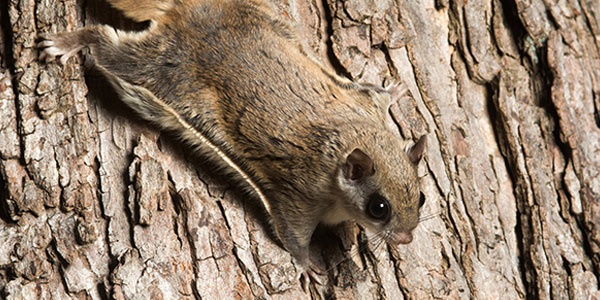
Fun Fact: People have long been jealous of the flying squirrel’s gliding abilities. Base jumpers and skydivers have developed a special suit mimicking the flying squirrel. The suit works to slow their descent and allows them to maneuver through the air. This field of engineering is called biomimicry.
Habitat
Flying squirrels live in deciduous and coniferous forests and woodlands. They make their households in snags, woodpecker holes, nests, and even abandoned nests of birds and other squirrels.
Squirrel Benefits
Did you know? Squirrels have a short-term memory which leads to a huge nature benefit. Squirrels don’t always remember where they stored their seeds, nuts, and berries for the winter.
Because squirrels often fail to repossess the buried food, abandoned seeds, and nuts often take root, creating trees and other plants in new locations. Consequently, squirrels are vital in sustaining and expanding plants and ecosystems. Just imagine how many trees have sprouted because of squirrels’ short-term memories.
Damage in Urban Texas
Squirrels can become nuisances in Texan urban areas. One of the most common issues is when they eat nuts, berries, bird seed, or vegetables from home gardens. During winter, they can damage trees in the yard as well. Squirrels like to strip the bark from thin-barked trees because such bark is easier to remove than thick bark.
Bark removal exposes a tree’s crucial cambium layer, which holds nutrients and sugars the tree produces. That layer provides a succulent treat for hungry squirrels, especially in winter and early spring, when other food sources are less available. Chewing on a tree’s bark and wood also helps keep squirrels’ teeth in good shape. The squirrels use the bark to line their nests.
Speaking of nests, another common issue is nesting. Rock squirrels and Gray squirrels are most common in Texas and are often found near cities and people. Around winter time, squirrels need to stay warm, so they sometimes find their way into home attics.
Squirrels may build nests in the attics, or other open cavities, of homes. They usually enter the attic through the vents, which often are not adequately screened. However, they can sometimes gnaw their way into the attic. Once inside, they can cause extensive damage to the insulation in the attic or walls.
Gnawing on the electrical wiring can cause a lot of destruction as well. Call wild animal and pest control Texas if you hear running, squealing, and chomping at night. This indicates the presence of squirrels.
Catch & Release, Prevention
Unfortunately, not much can be done to rid a yard of squirrels after they discover its trees. Squirrels are too plentiful. Wild animal and pest control can safely catch the squirrels and return them to the wild, away from your residence or business.
The most common method is a simple squirrel trap. Squirrel traps are placed near the squirrels’ burrow entrance or the tree where you see the most squirrel activity. We live trap the squirrel and begin the removal process. The traps are baited with nuts, acorns, berries, or other squirrelly treats. The pest control team does not want the squirrels to be a continuous nuisance and will strategically release them to minimize their chance of returning to the area. One method to lessen the chances of the squirrels returning is called Zig-Zag. Zig-Zag is when the squirrels are released miles away from the property on which they were caught in a zig-zag pattern. Doing this disrupts their perception of distance and makes it less likely for the animal to return. A solid 5-7 mile drop-off is required to be effective.
Fox squirrels and Gray squirrels are classified as game animals in Texas. They can legally be live cage-trapped and released. If a landowner chooses to do so, they must contact wild animals and pest control. This is regulated by Texas Parks and Wildlife Department.
Before pest control becomes involved, there are a few preventative methods you can do to deter squirrels:
- If you have a ground squirrel eating away at the bark, loosely wrap chicken wire, which has 1-inch holes around a tree trunk’s base helps to keep ground squirrels from removing the tree’s bark.
- Keep tree squirrels, such as foxes and flying squirrels, out of your tree by placing a piece of metal flashing around the tree’s trunk. The flashing must be at least 2 feet wide and more than long enough to wrap around the tree so it can be adjusted to encompass the entire trunk. The flashing will reroute the squirrel.
- Trim trees 8-10 feet away from the roof.
- Squirrels love to eat; although they are cute, they never feed them. Do not leave food out (inside or outside).
- Ensure your sheds, storage areas, crawlspaces, and garbage cans are clean and dry.
- Try to seal any small holes and cracks that are half-quarter inch or more.

